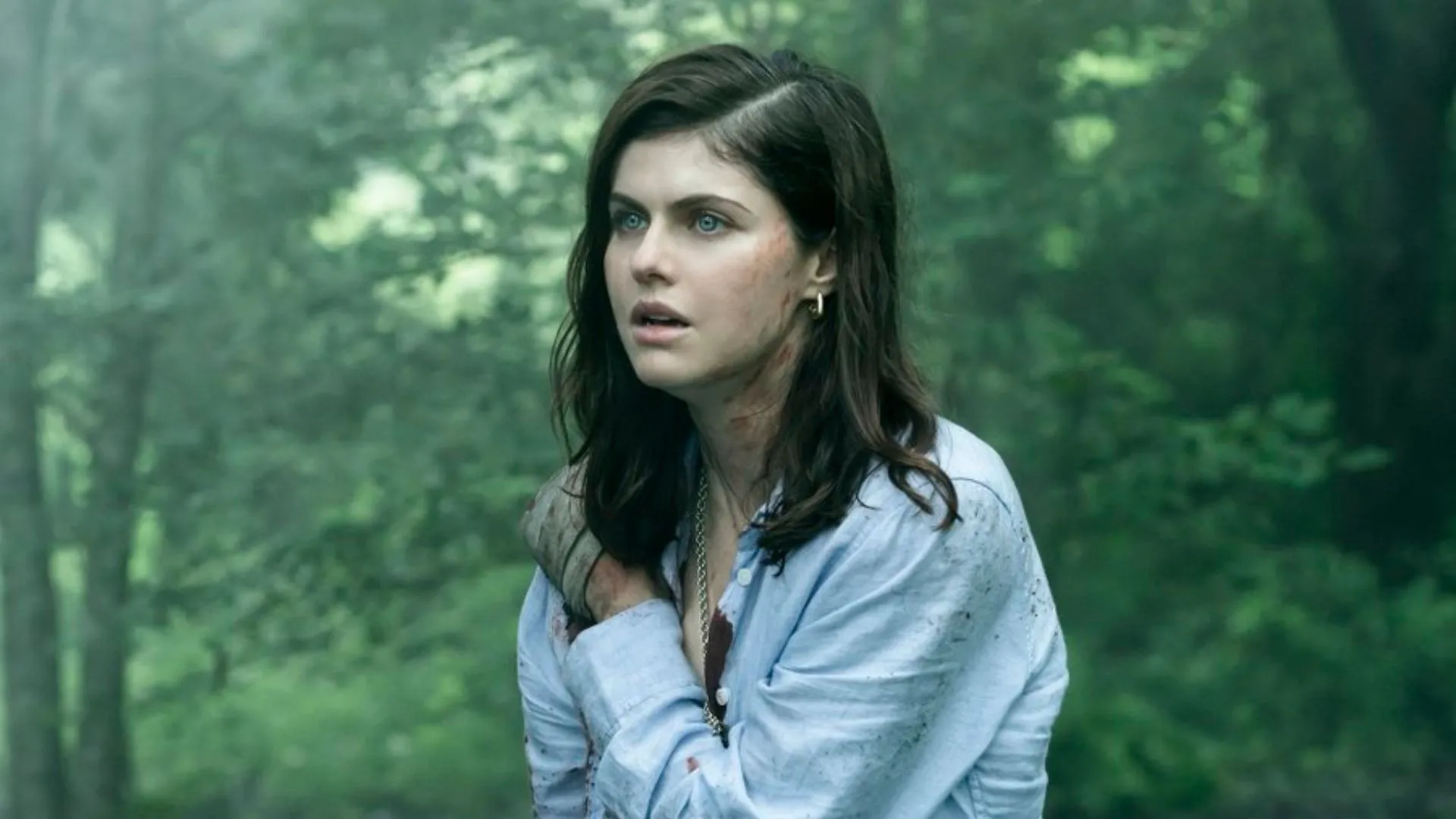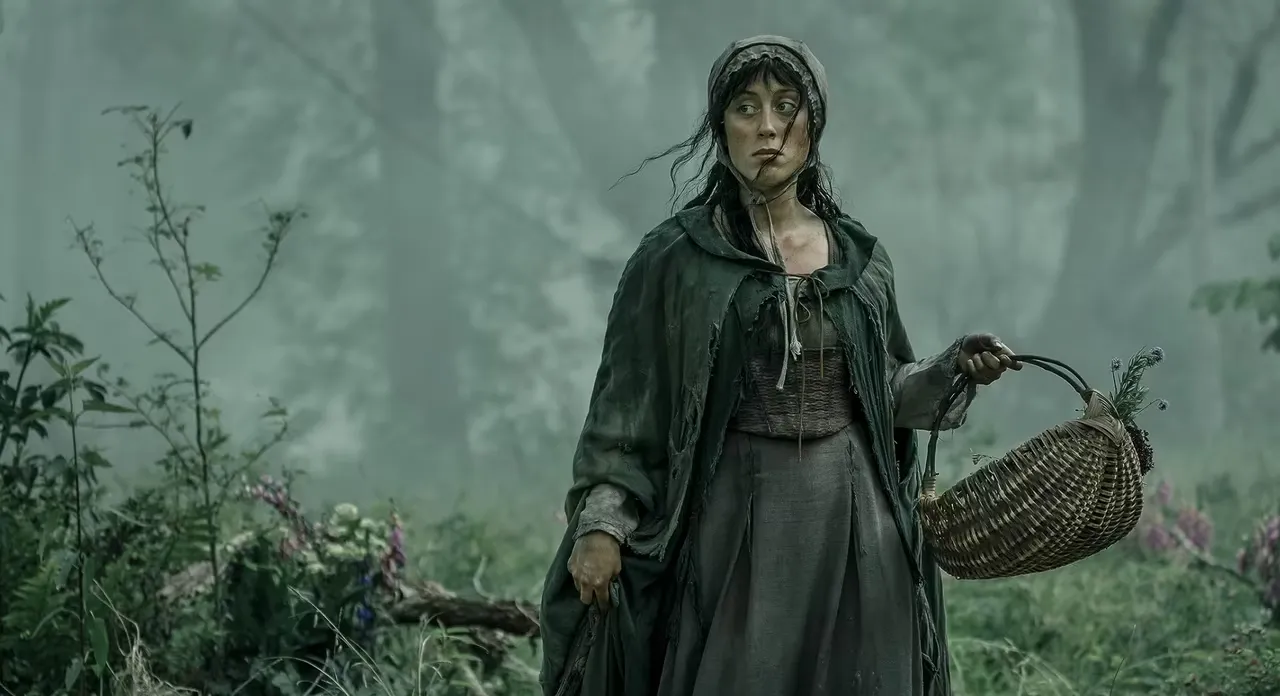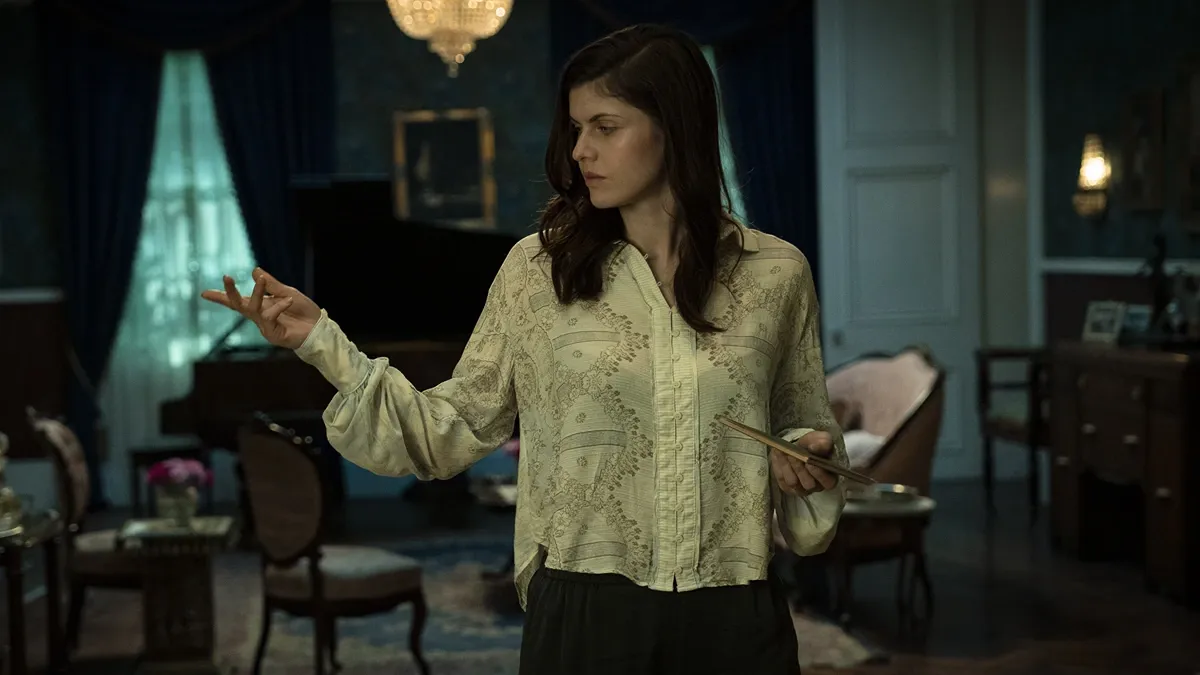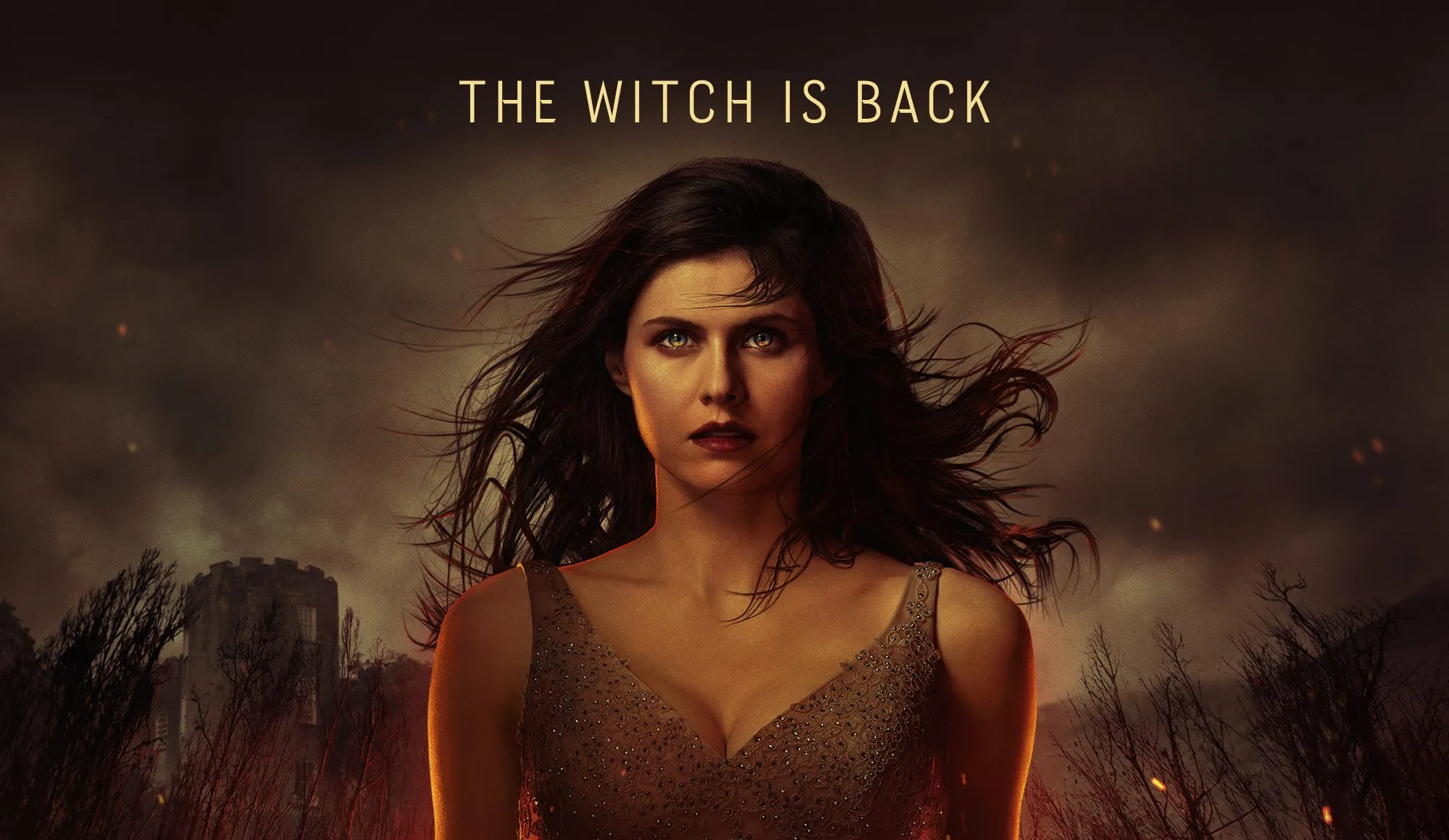In Season 2 of Mayfair Witches, Rowan Mayfair learns how to balance being a mother and being a witch after giving birth to the demon spirit Lasher.
This season takes her on a strange journey to find herself, where the lines between mother instinct and dark power are fuzzy. Lasher’s changing identity becomes a central tension as he ages quickly, forcing Rowan to confront the consequences of her decisions.
Rowan’s dual roles as a mother and a potent witch are an interesting narrative device, questioning conventional ideas about women’s power. Characters like Ciprien, who is trying to figure out his ties to the Talamasca, and Moira, who can read minds and has her plans, make the family relationships more complex.
This complicated story reflects larger societal worries while also connecting with viewers on a very personal level. It represents a change toward narratives that are complex and focused on characters that are common in modern independent films.
Unraveling Fear: The Horror Elements of Mayfair Witches Season 2
Season 2 of Mayfair Witches goes into horror, and the show’s Gothic and supernatural themes are explored much more than in Season 1. The series skillfully combines conventional horror with psychological depth, creating a layered narrative that resonates with modern anxieties.
As an example, the scary images of Lasher, a child with a creepy presence, make you feel uneasy long after the movie is over. Visceral moments, such as Rowan waking up to find Lasher standing over her, grinning with bloodied teeth, successfully heighten tension and push the limits of what horror can convey in a character-driven narrative.
The show stays true to its Gothic roots by using moody settings that strengthen the creepy tone. With its dim lights and dark areas, the falling-apart Mayfair house becomes a character in its own right, entangling the characters in a web of family secrets and supernatural threats. This environment serves as a backdrop for horror but also reflects the inner turmoil of its inhabitants, combining setting and character psychology.
While Rowan faces emotional and mental horror, his skills change into a double-edged sword. Her relationship with Lasher makes things more difficult, making the line between fear and maternal love unclear. As she tries to figure out what her powers mean, viewers see her fall into a dark emotional landscape. This narrative is reminiscent of the character-driven stories of the French New Wave, where personal problems frequently come into contact with larger societal themes.
The horror elements in Mayfair Witches do more than just shock; they help character growth by revealing how weak human emotions can be when faced with overwhelming power. In the series, viewers are forced to confront uncomfortable truths about identity, agency, and the costs of power. This gives the horror genre a new look that still gives us the thrills we want and resonates with modern cultural worries.
Expanding Horizons: The Immortal Universe in Mayfair Witches Season 2
Mayfair Witches Season 2 skillfully weaves itself into the larger fabric of the Immortal Universe. This bold move is similar to other modern series that build complex worlds. The series not only improves its narrative by using characters and plot lines from Interview with the Vampire but also creates the possibility of exciting crossovers that might change what viewers expect.
The introduction of the Talamasca, a mysterious group with a history of paranormal activity, increases intrigue. The stakes feel personal and grand; their role as guardians of the arcane suggests possible conflicts and alliances that could shape future storylines.
This season’s world-building is especially interesting as new characters and settings take the Mayfair legacy outside New Orleans. Moira, who has the gift of reading minds, and Julien Mayfair, played by Ted Levine, give the family narrative new life. Each character enhances the complexity of the Mayfair family, which feels like a thread in a bigger narrative tapestry.
For example, the series introduces the haunting landscapes of Scotland. These places not only serve as a backdrop but also show the characters’ pasts and inner battles. This geographical expansion resonates with current cultural trends that favor interconnected worlds, making Mayfair Witches a compelling example of how independent storytelling can flourish within mainstream frameworks.
This season asks viewers to explore themes of legacy and identity, much like the layered narratives of French New Wave movies, while leaving the door open for additional explorations in its ever-expanding universe.
Complex Ties: Character Dynamics in Mayfair Witches Season 2
The narrative is enhanced in Mayfair Witches Season 2 by the complex character interactions, especially the changing relationships between Rowan, Lasher, and the rest of the Mayfair clan. Rowan and Lasher’s relationship is the season’s most important part. It goes back and forth between maternal love and a troubling understanding of Lasher’s darker side.
This duality shows how family ties can strengthen and harm, capturing the tension between love and fear. As Lasher grows up quickly, his relationship with Rowan changes, and identity and morality issues become more and more complicated.
The way the Mayfair family works together is also very interesting. Moira’s arrival adds complexity to the already tense situation by introducing conflict and the possibility of a partnership. Their initial disagreement gives way to a mutual love for their family, reflecting the main theme of how trauma can bring people together in ways they didn’t expect. Making their supernatural experiences feel relatable and grounded, the interactions between the Mayfair women show ingrained rivalries and alliances that mirror real-world familial battles.
This season is all about personal growth, especially for Rowan. A fight marks her journey for control over her growing powers, which serve as both a blessing and a curse. A rich character arc that resonates with modern issues of empowerment and responsibility is created by the tension between her desires and the consequences of her abilities. Characters who aren’t main characters, like Ciprien and Julien, are very important to her journey.
While Julien’s presence serves as a haunting reminder of the Mayfair legacy, forcing Rowan to confront her family’s dark history, Ciprien’s internal conflict over his loyalty to the Talamasca versus his feelings for Rowan adds depth to the narrative.
These complex relationships and character growth improve the story, showcasing a nuanced exploration of power, identity, and the complexity of familial love. Mayfair Witches Season 2 embraces the messiness of human relationships while luring viewers deeper into its supernatural world. This is reminiscent of the character-driven narratives of filmmakers like Noah Baumbach.
Weaving Tension: Narrative Structure and Pacing in Mayfair Witches Season 2
Mayfair Witches Season 2’s narrative structure skillfully balances pacing and plot development, giving viewers an interesting rhythm that mirrors the emotional stakes of the characters. The season builds up slowly, with moments of tension and resolution. This is especially true when Rowan struggles with her powers and relationship with Lasher.
During important scenes, like confrontations between family members or moments of supernatural revelation, the pacing frequently picks up, creating a real sense of urgency. These high points of tension are well balanced by slower, more introspective parts that help characters grow, showcasing the series’ ability to combine character-driven arcs with plot-driven tension.
This harmony highlights the narrative’s dual focus. The main plot moves the story along by adding new risks and expanding on family history, but the characters are still the most important part. Their struggles and growth are skillfully woven into the storyline, ensuring that the audience stays emotionally involved.
Storytelling methods are especially noteworthy, with flashbacks being a crucial narrative device. In addition to adding to the present, these glimpses into the past shed light on Rowan’s fears and desires and the complicated history of the Mayfair family. Although slight, nonlinear storytelling elements encourage viewers to assemble the narrative puzzle, creating an interesting experience reminiscent of the creative structures seen in modern independent films.
This method resonates with the themes of legacy and identity because it is based on personal experiences similar to how directors like Noah Baumbach tell stories, skillfully combining legacy and narrative complexity. Overall, Mayfair Witches Season 2 has an interesting narrative framework that challenges traditional storytelling while being likable and approachable.
Crafting Atmosphere: Production Quality and Direction in Mayfair Witches Season 2
Mayfair Witches Season 2’s direction greatly impacts the show’s tone and look, revealing a deep understanding of how visual storytelling and emotional depth work together. The series adopts a moody, atmospheric style under the creative team’s direction, which enhances the Gothic elements already present in the narrative.
The haunting beauty of New Orleans is captured in the cinematography, marked by deep shadows and stark contrasts, while also reflecting the characters’ inner struggles. In addition to enveloping viewers in the supernatural, this visual style mirrors the psychological tension that drives Rowan’s journey.
From a production point of view, the quality is very good overall. The set design explores the Mayfair family’s ancestral home in great depth, creating an environment that feels both real and fantastical. Special effects are used wisely to enhance important moments without detracting from the narrative. In the parts where Lasher changes forms, for example, a mix of practical effects and CGI makes the effects feel natural rather than overdone.
Sound design is also very important. A haunting score complements the visual mood and echoes the emotional weight of the characters’ experiences. Standout moments, like the climactic confrontations set against a backdrop of thunder and rain, use sound to heighten tension and pull viewers deeper into the story. This careful attention to production detail supports the series’ themes and reflects a larger cultural trend toward high-quality, cinematic television that makes it difficult to distinguish between independent and mainstream filmmaking.
Looking Ahead: Conclusion and Future Prospects for Mayfair Witches Season 2
Mayfair Witches Season 2 builds on the first season’s success by showcasing strong character relationships, an immersive visual style, and an interesting narrative structure. Particularly through Rowan’s complicated relationship with Lasher, the series excels in exploring family dynamics.
The moody direction and technical strengths, like the beautiful photography and well-done sound design, make the story even better. But sometimes problems with the pacing stop the flow. This is especially true when story developments feel rushed or unbalanced in the middle of the season.
Looking ahead, the series has a huge opportunity to dig deeper into its characters and the complicated history of the Mayfair family. Rich narrative threads could be created by introducing new characters and places, enabling the exploration of themes like legacy and the weight of power. I hope that secondary characters like Moira and Ciprien get more complex storylines. Their journeys could help Rowan’s in big ways.
Future seasons might also benefit from a more focused narrative, ensuring that tension and resolution are evenly distributed throughout the season. I’d also love to see the series use more nonlinear storytelling techniques, like those used by filmmakers like Greta Gerwig, which could add more complexity and increase emotional resonance. As the series grows, I think it will reflect current cultural trends and push fans with its bold story choices.
The Review
Mayfair Witches Season 2
In an incredibly atmospheric setting, Mayfair Witches Season 2 deftly deepens its exploration of family dynamics and personal identity. Strong character growth and beautiful graphics and sound design enhance the narrative, though pacing problems occasionally take away from the overall flow. The series will continue to be an interesting addition to the supernatural genre, with room for more narrative experimentation and character exploration.
PROS
- Strong character development, particularly for Rowan and Lasher.
- Atmospheric cinematography that enhances the storytelling.
- Intriguing exploration of family dynamics and legacy.
- Effective use of sound design to build tension.
- Engaging narrative structure with moments of tension and resolution.
CONS
- Pacing issues that disrupt narrative flow at times.
- Some supporting characters feel underdeveloped.
- Occasional reliance on familiar tropes in supernatural storytelling.





















































